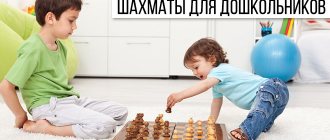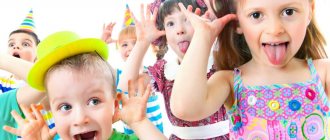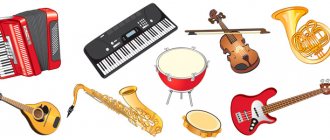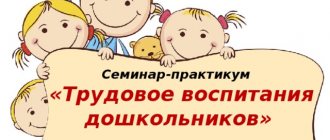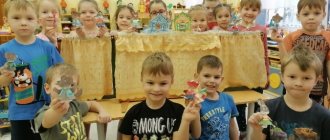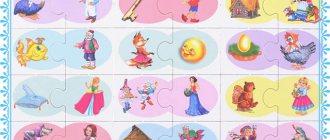Productive activities for preschool children
Productive activity of preschoolers is the right direction in preparing the future first-grader for education.
The formation, development and formation of a child’s personality is one of the most relevant, important and responsible areas of activity for specialists involved in the field of pedagogy and child psychology. One of the main tasks that must be constantly performed in this direction is the use of various styles, forms and methods, including productive activities.
Important
Productive activities of children play one of the main roles in the process of comprehensive development of a preschooler. Along with the game type, they constitute a single complex of work on preschool education, carried out under the guidance of adults (teachers, educators). The result of this activity should be a specific product.
Numerous studies conducted by specialists in different parts of the world and with different categories of children who have not yet reached primary school age have shown the effectiveness of productive activities among this age group of children.
A beneficial effect on preschoolers has been established in the development of graphic skills, as well as the development of perseverance and determination in mastering important skills.
“Card index of didactic games on productive activities in different age groups”
“Card index of didactic games on productive activities in different age groups”
Completed by: Khairulina Elena Vasilievna
teacher at State Educational Institution "Tula Pedagogical College"
Junior group
“Cut pictures”
Purpose:
Formation of ideas about Russian folk toys: Dymkovo, Gorodets, Filimonov.
Rules:
Collect the picture correctly
Progress of the game:
The teacher shows the toys to the children, names them, lets them look, and asks if they have seen such toys. Next, the teacher says that she brought postcards with pictures of these toys, which she also wanted to show them, but she accidentally dropped the tray, everything fell apart and got mixed up. The teacher remembers that the guys know what these toys look like and asks for help.
"What comes in red"
Target:
Consolidating knowledge of flower names.
Rules:
Name and show a red object
Progress of the game
: The teacher places objects of different colors (vegetables, dishes, pencils, etc.) along the edge of the table. The doll Katya comes to visit the children. She wants to match her red bow with objects of the same color. Children come up one at a time and name the object and its color: red tomato, red pencil, etc. If the answer is correct, the Katya doll nods her head approvingly, and the child puts the object in her purse; if the answer is incorrect, then Katya turns away.
“Complete the picture”
Target:
: Formation of the ability to create a composition by adding missing objects
Rules:
Correctly complete the missing element.
Progress of the game:
Guys, look. Due to a strong hurricane, the windows and door of the house were blown off, the wheels of the car were blown off, and the flowers were completely left without stems or leaves. Guys, will you help finish painting the parts that were demolished by the hurricane before the owners of the house return home?
Middle group
"Rainbow"
Goal:
Familiarize children with the color system, with the sequence of their location in the spectrum.
Rules:
Make a rainbow correctly
Progress of the game:
The teacher asks the children which of them saw a rainbow after the rain. The teacher invites the children to create their own rainbow from the available stripes. If necessary, prompts and helps children.
"Matryoshka sundress"
Target:
Development of composition skills
Progress of the game:
Guys, a matryoshka came to visit us, but she is very sad, because her dress and scarf are not decorated in any way. Guys, will you help the matryoshka?
“Make a pattern based on the sample”
Target:
Strengthening the ability to distinguish geometric shapes
Rules:
Make a pattern correctly using the sample.
Progress of the game:
The teacher invites the children to take one card at a time, look at it and answer the questions:
— What geometric shapes are the pattern on the sample made of?
— What color are the figures?
- Where are they located?
1. After this, the child selects the necessary geometric shapes and lays out exactly the same pattern on a blank card.
2. If it is difficult for a child to complete a task, then we use the method of overlaying figures.
3. You can invite the child to make his own pattern.
Senior group
“Collect a caterpillar”
Goal:
Formation of children's skills in determining warm or cold colors, in the ability to arrange colors in shades from light to dark, and vice versa.
Rules:
Arrange colors in the correct color scheme
Progress of the game:
Guys, caterpillars came to visit us. But the trouble is, while they were crawling, they lost their parts. Will you help them? You need to collect one caterpillar from a warm color scheme, and the other from a cold color scheme.
"Nonexistent Animal"
Target:
Development of imagination, development of fine motor skills.
Progress of the game:
Guys, imagine distant planets inhabited by unknown, fantastic animals. And also imagine that a zoo has appeared where you can look at these animals. I suggest you make such animals and then tell stories about them.
"Magic Colors"
Target:
Consolidating knowledge about composite colors
Rules:
Correctly obtain a shade of color by adding or subtracting another color from a color
Progress of the game:
Guys, you already know how to mix different colors with each other and get a new color. Now I want to play the game “Magic Colors” with you. Your task is to correctly determine the color that will be obtained if you add 2 colors, or “subtract” another from one color.
"Genres of Painting"
Target:
Clarifying children's ideas about different genres of painting.
Rules:
Correctly distribute paintings by genre
Progress of the game:
Guys, look, each of you has paintings of a certain genre. Now I propose to put on the table paintings depicting only still life (landscape, portrait)
Preparatory group
“Finish it”
Goal:
Development of creative imagination.
Progress of the game:
Guys, I have a creative task for you. Look at the pictures, what do you think the items are missing? That's right, soul mates. Guys, can you help me draw the other halves of the objects?
"Perspective"
Target:
Consolidating knowledge about perspective, horizon line, distance and approach of objects.
Rules:
Correctly position objects in the picture
Progress of the game:
Guys, I suggest you practice a little and arrange the objects in the picture taking into account perspective
Definition
Productive activities of children are one or another way of a child’s activity, the goal of which is to obtain a product that has a specific set of qualities. This category includes:
- different ways of assembling structures,
- crafts made from plasticine or special clay,
- performing appliqué work, mosaics,
- making various crafts,
- more complex work - certain layouts.
All productive activities of children listed above perform a responsible function for the development of preschoolers. This is the basis of many kindergarten programs designed for children under school age. This program is aimed at their comprehensive development and education.
Comprehensive development
The formation of this type of activity for children takes place in kindergarten under the guidance of experienced specialists. At this time, the connection between the children’s desire to create this or that product and the expansion of their cognitive abilities, various processes and qualities, the emotional area, and the volitional sphere of development is most clearly manifested.
The most vivid and controlled development of children’s character traits occurs, the formation of their character and individuality.
It is also interesting to read what features the speech development of an older preschooler has.
Psychological characteristics of a preschool child
Preschool childhood is the period from the moment of awareness of oneself as a member of human society (from about 2-3 years) to the moment of systematic education (6-7 years). In this process, social factors in personality formation play a decisive role. In preschool childhood, the basic individual psychological characteristics of the child are formed, and conditions are created for the formation of social and moral characteristics of the individual.
This phase of childhood is characterized by:
- As a last resort, the child needs the help of an adult to meet the basic needs of life;
- the maximum possible role of the family in satisfying all basic needs (material, spiritual, cognitive);
- minimal possibility of self-protection from harmful environmental influences.
Appeal. By the age of six, a child’s vocabulary has expanded so much that he can easily explain to another person everything that relates to everyday life and his area of interest. While a typically developing three-year-old child uses up to 500 or more words, a six-year-old child uses between 3,000 and 7,000 words. A six-year-old child's vocabulary consists of nouns, verbs, pronouns, adjectives, numerals and connectives.
Sensory development. A child attending kindergarten not only distinguishes colors, shapes, sizes of objects and their position in space, but can also correctly name the proposed colors and shapes of objects and correctly distribute objects by size. He can also draw simple shapes and color them in a specific color. It is very important that the child can establish the identity of objects with a certain norm. Standards are humanity’s models of the main varieties of qualities and properties of objects. Thus, the standards of perception (sensory standards) are: colors of the spectrum, white and black colors, all kinds of shapes, sound levels, time intervals, etc. They arose during the history of human culture and are used by people as models, standards, with the help of which the compliance of perceived reality with one or another standard from a system of ordered standards is determined.
If a child can correctly name the color and shape of an object, if he can correlate the perceived quality with the norm, then we can assume that he can establish identity (the ball is round), partial similarity (the apple is round, but not perfectly similar to the ball), dissimilarity (the ball and cube). By carefully examining, touching or listening, the child performs correlative actions and traces the connection between what he perceives and the standard.
Development of thinking. A feature of a child’s healthy psyche is cognitive activity. A child’s curiosity is constantly aimed at understanding the world around him and forming his own picture of this world. The child plays, experiments, tries to establish cause-and-effect relationships and dependencies. For example, he himself can understand which objects will sink and which will float. He has many questions about the phenomena of life. The more intellectually active a child is, the more questions he asks and the more varied these questions become.
Development of attention. The child’s cognitive activity in exploring the world around him organizes his attention to the objects under study for quite a long time, until his interest wanes. If a six-year-old child is engaged in a game that is important to him, he can play for two or even three hours without being distracted. He can focus on productive activities (drawing, designing, work that is meaningful to him) for the same amount of time. However, such results of concentration are a consequence of interest in what the child is doing. He will languish, be distracted, and feel completely miserable when he has to engage in activities that are not suitable for him or that he does not like at all.
Memory development. Preschool age is an age of intensive memory development. It is generally accepted that memory is the leading cognitive process. In fact, a preschool child masters the language to such an extent that he becomes a true native speaker of his native language. Memory records and stores events and information that are significant to the child. Preschool childhood leaves many memories that will last a lifetime.
A six-year-old child can already voluntarily remember objects. When memorization becomes a condition for successful play or is important for the realization of a child’s aspirations, he easily remembers words in a certain order, poems, sequences of actions, and so on. A six-year-old child is already consciously able to use memorization techniques. He repeats what needs to be remembered, tries to understand, assimilate what was memorized in a certain order. However, involuntary memorization remains more productive. Here, too, everything is determined by the child’s interest in what he is doing.
Development of imagination. A six-year-old child can create in his imagination many situations in which he appears at his most beautiful. Having formed in the game, the imagination moves into other types of activities. This is most clearly manifested in drawing and in writing children's rhymes and fairy tales. Here there is great variability in the nature of children's creativity: some children are focused on recreating real reality, others on creating fantastic images and situations. Fantasy plays a greater role in the life of a child than in the life of an adult; it manifests itself much more often and allows more frequent violations of the reality of life. The tireless work of imagination is the main way a child learns and masters the world around him; it is a way to go beyond the limits of narrow personal experience.
